Raidmax Monster RX-700AT Power Supply Review
Raidmax is the first company to utilize Andyson's new Titanium platform with its Monster RX-700AT PSU. This is a semi-modular unit with a double ball-bearing fan and Japanese capacitors, promising high performance and exceptional efficiency.
Why you can trust Tom's Hardware
Transient Response Tests
Advanced Transient Response Tests
For details on our transient response testing, please click here.
In these tests, we monitor the response of the PSU in two different scenarios. First, a transient load (10A at +12V, 5A at 5V, 5A at 3.3V and 0.5A at 5VSB) is applied for 200ms while the PSU works at 20 percent load. In the second scenario, the PSU is hit by the same transient load while operating at 50 percent load. In both tests, we use our oscilloscope to measure the voltage drops caused by the transient load. The voltages should remain within the ATX specification's regulation limits.
These metrics are crucial because they simulate the transient loads a PSU is likely to handle (such as booting a RAID array or an instant 100 percent load of CPU/GPUs). We call them "Advanced Transient Response Tests," and they are designed to be very tough to master, especially for PSUs with less than 500W capacity.
Advanced Transient Response at 20 Percent
| Voltage | Before | After | Change | Pass/Fail |
|---|---|---|---|---|
| 12V | 12.208V | 12.096V | 0.92% | Pass |
| 5V | 5.068V | 4.966V | 2.01% | Pass |
| 3.3V | 3.326V | 3.196V | 3.91% | Pass |
| 5VSB | 5.061V | 4.988V | 1.44% | Pass |
Advanced Transient Response at 50 Percent
| Voltage | Before | After | Change | Pass/Fail |
|---|---|---|---|---|
| 12V | 12.169V | 12.061V | 0.89% | Pass |
| 5V | 5.061V | 4.961V | 1.98% | Pass |
| 3.3V | 3.304V | 3.186V | 3.57% | Pass |
| 5VSB | 5.052V | 4.968V | 1.66% | Pass |
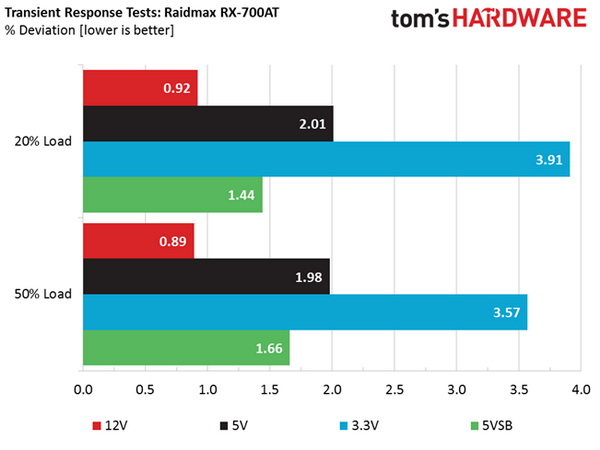
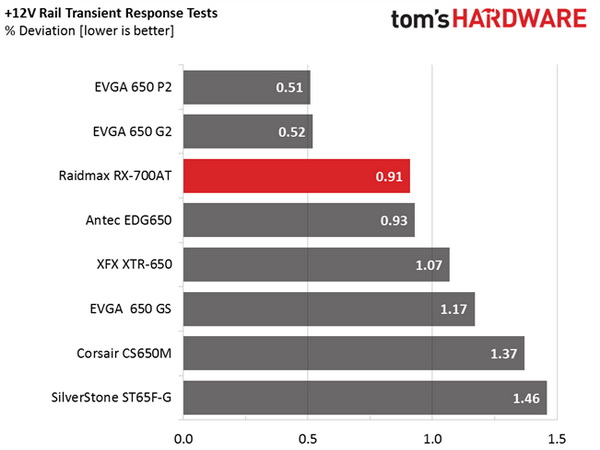
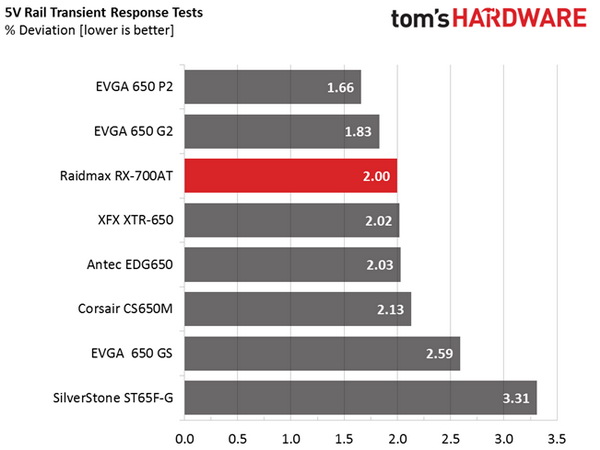
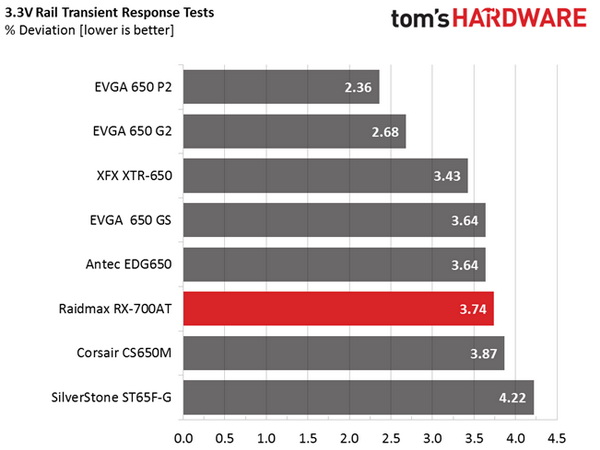

Voltage drops on the +12V, 5V and 5VSB rails are controlled well. However, at 3.3V the voltage falls below 3.2V in both cases. We don't like to see that, especially from high-end PSUs like this one.
Here are the oscilloscope screenshots we took during Advanced Transient Response Testing:
Transient Response At 20 Percent Load
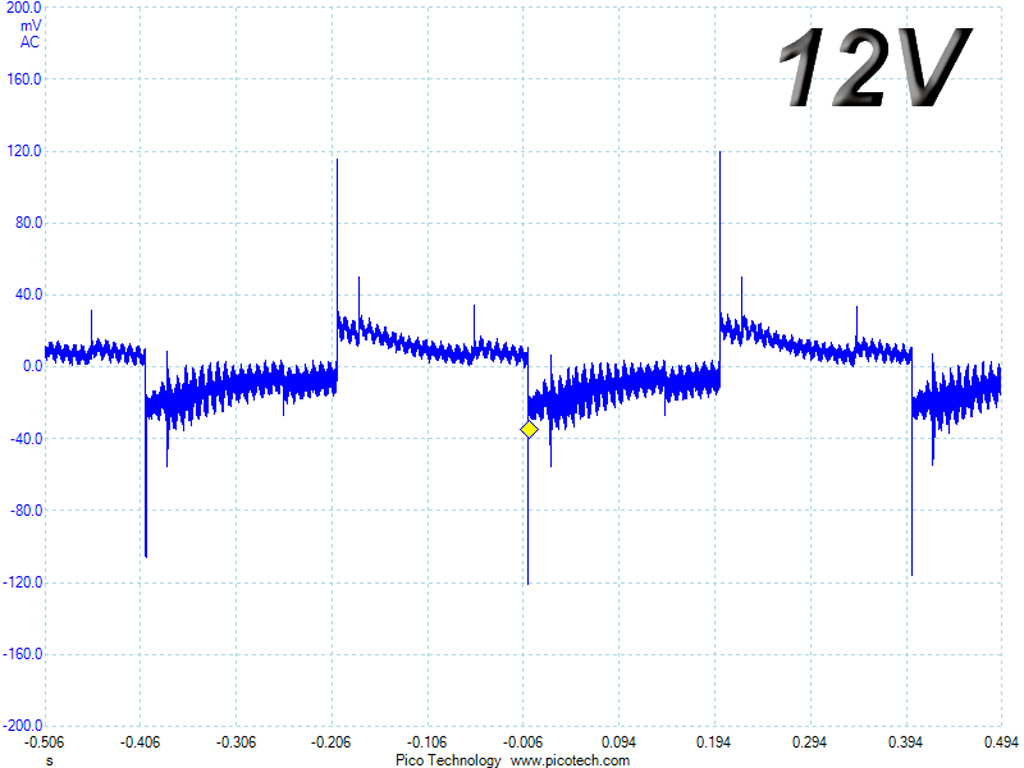
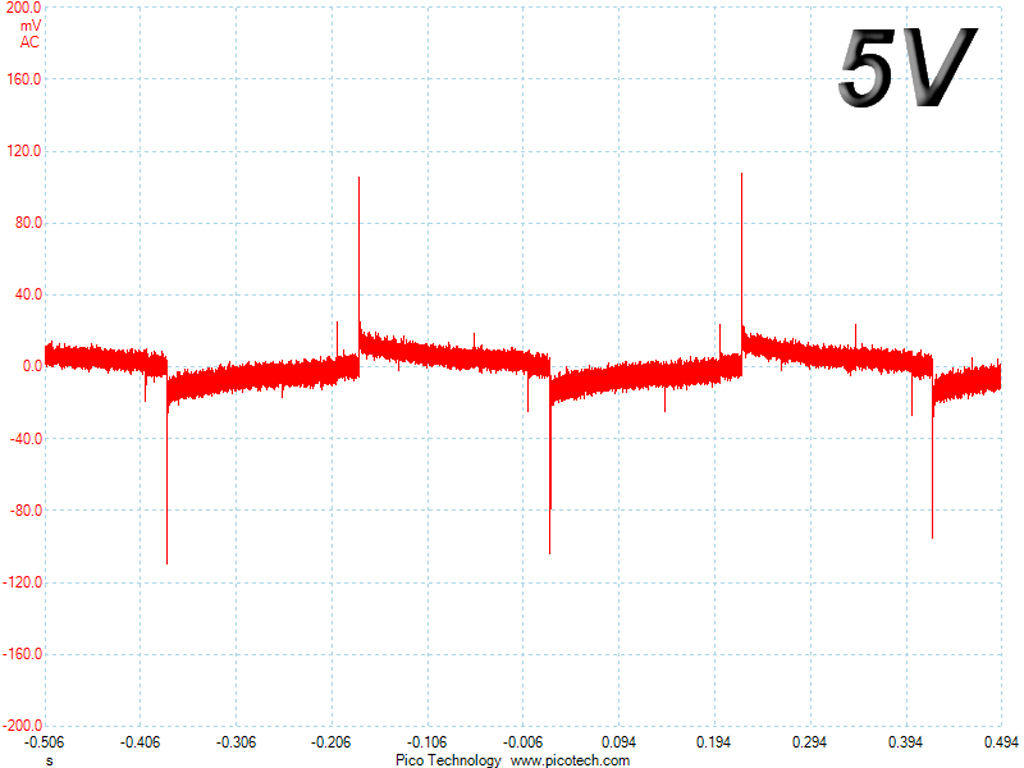
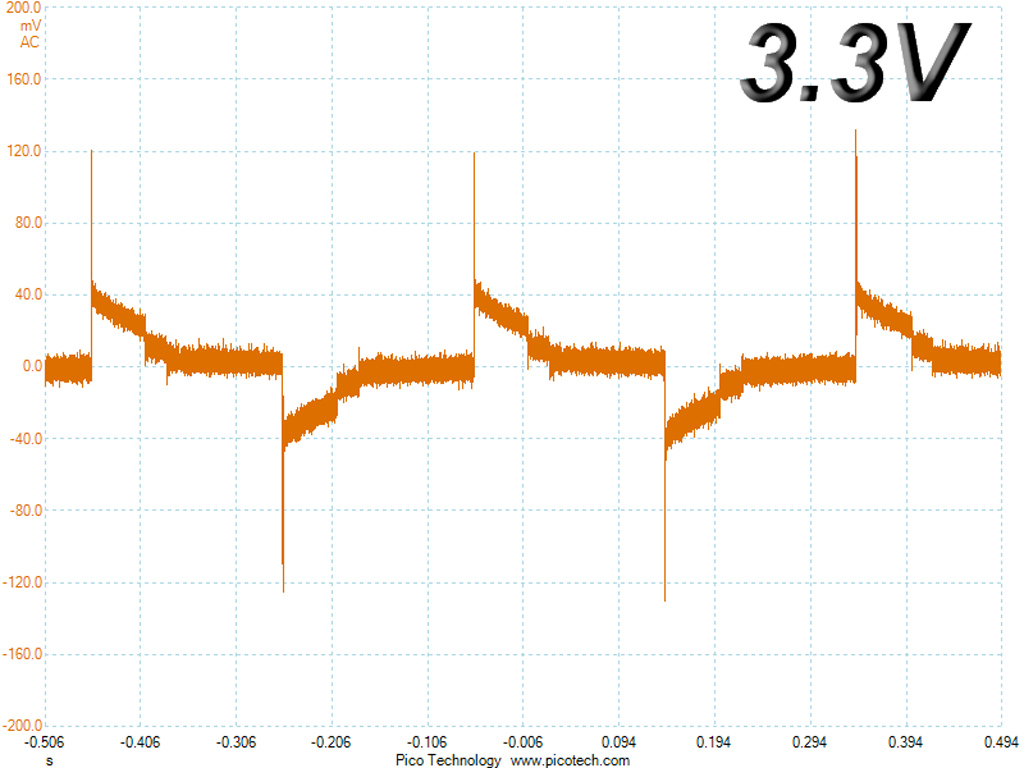
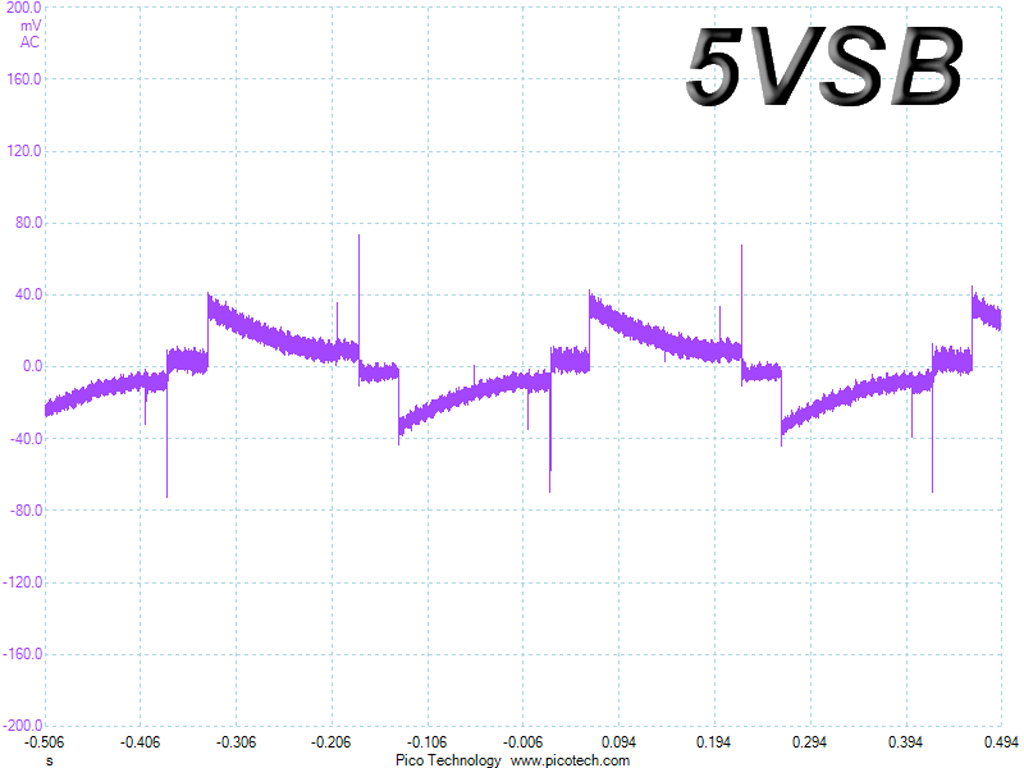
Transient Response At 50 Percent Load
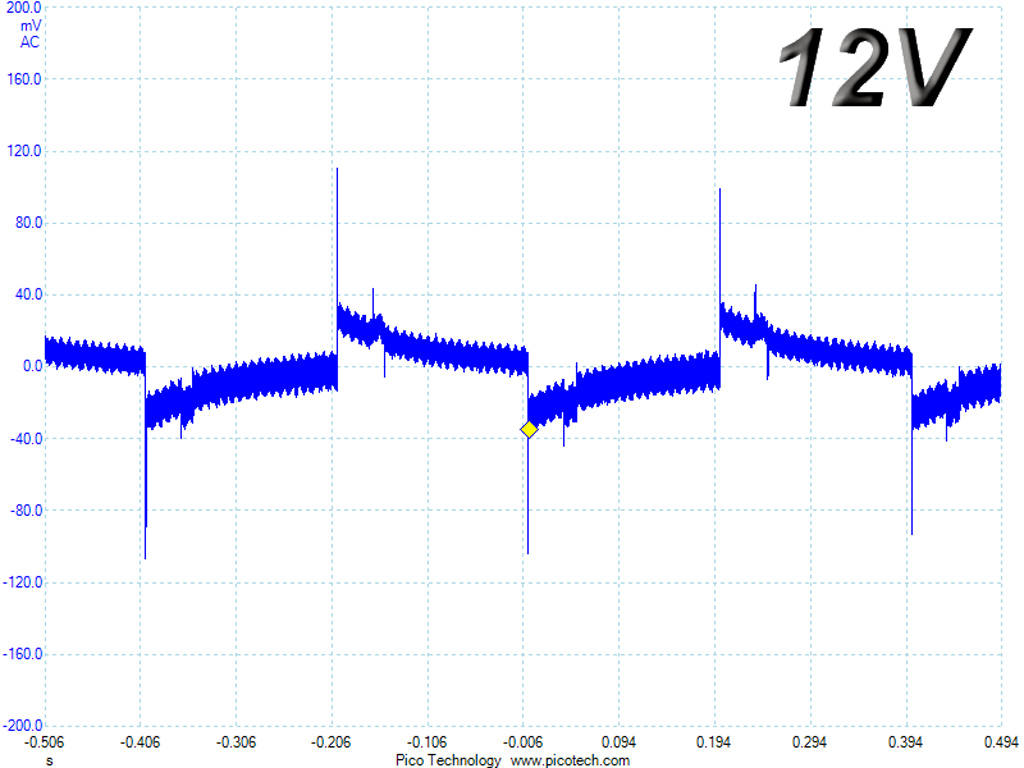
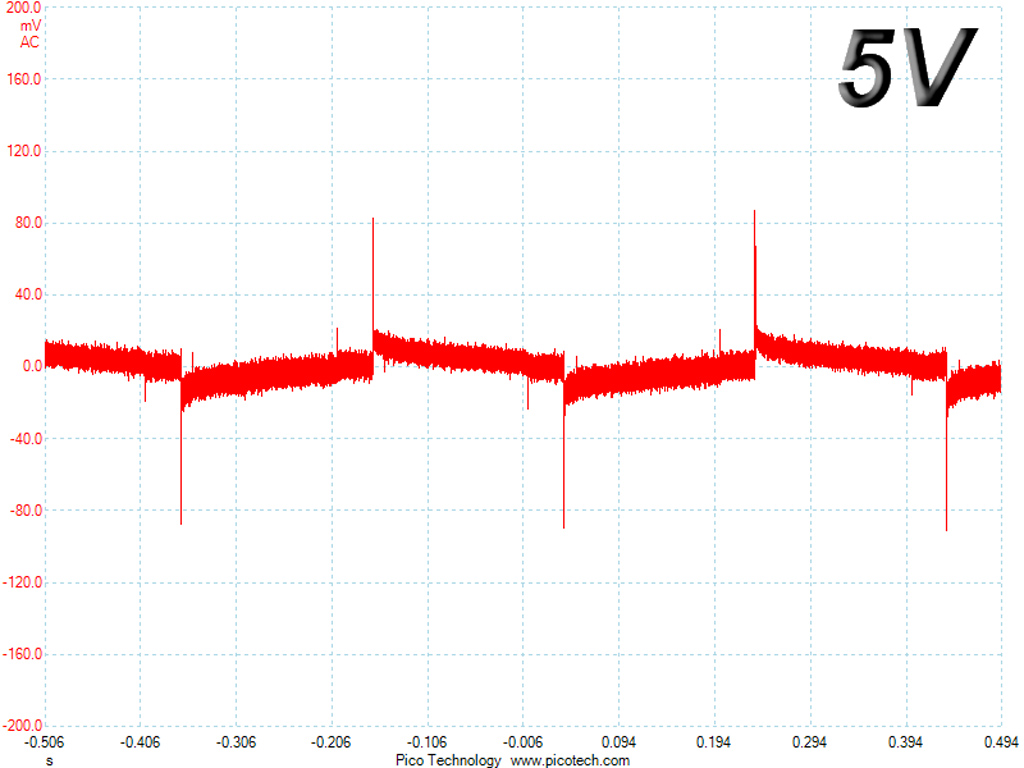
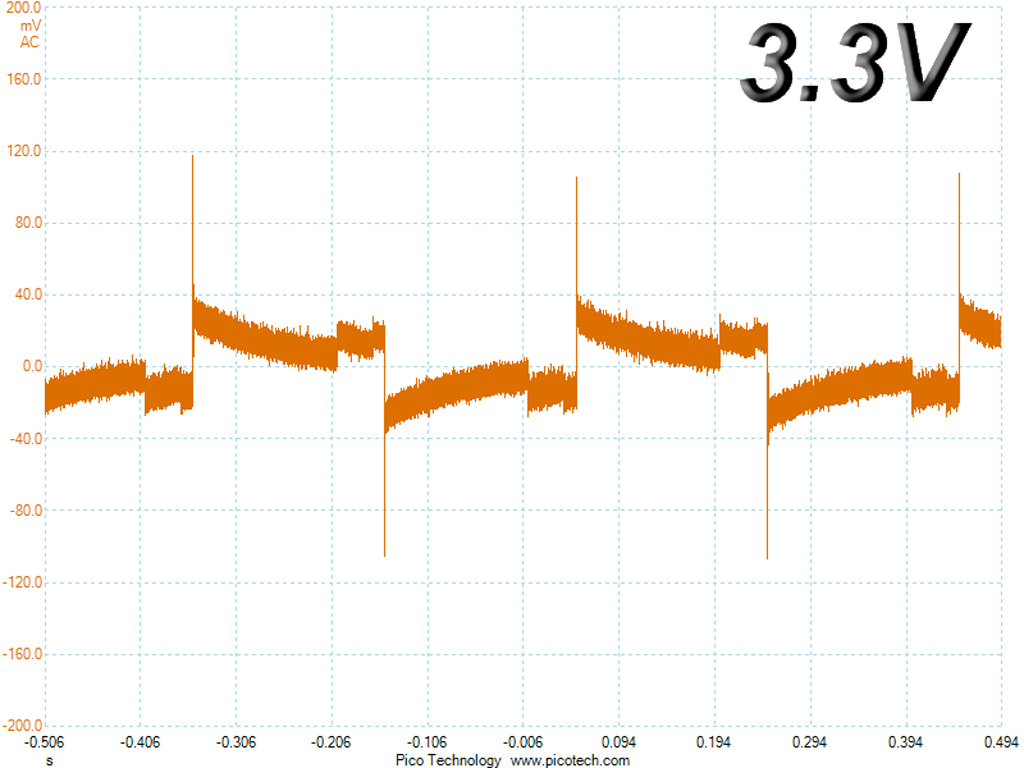
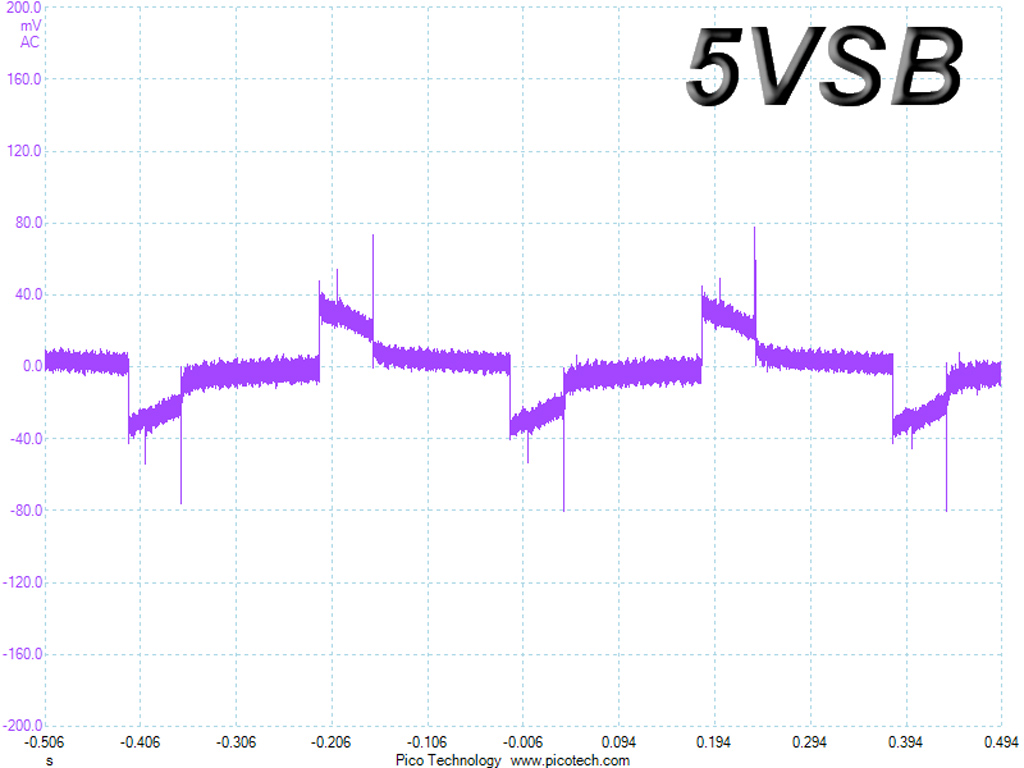
Turn-On Transient Tests
In the next set of tests, we measure the PSU's response in simpler transient load scenarios—during its power-on phase.
For the first measurement, we turn off the PSU, dial in the maximum current the 5VSB can output and switch on the PSU. In the second test, we dial the maximum load the +12V can handle and start the PSU while it's in standby mode. In the last test, while the PSU is completely switched off (we cut off the power or switch off the PSU by flipping its on/off switch), we dial the maximum load the +12V rail can handle before switching on the PSU from the loader and restoring power. The ATX specification states that recorded spikes on all rails should not exceed 10 percent of their nominal values (+10 percent for 12V is 13.2V, and 5.5V for 5V).
Get Tom's Hardware's best news and in-depth reviews, straight to your inbox.
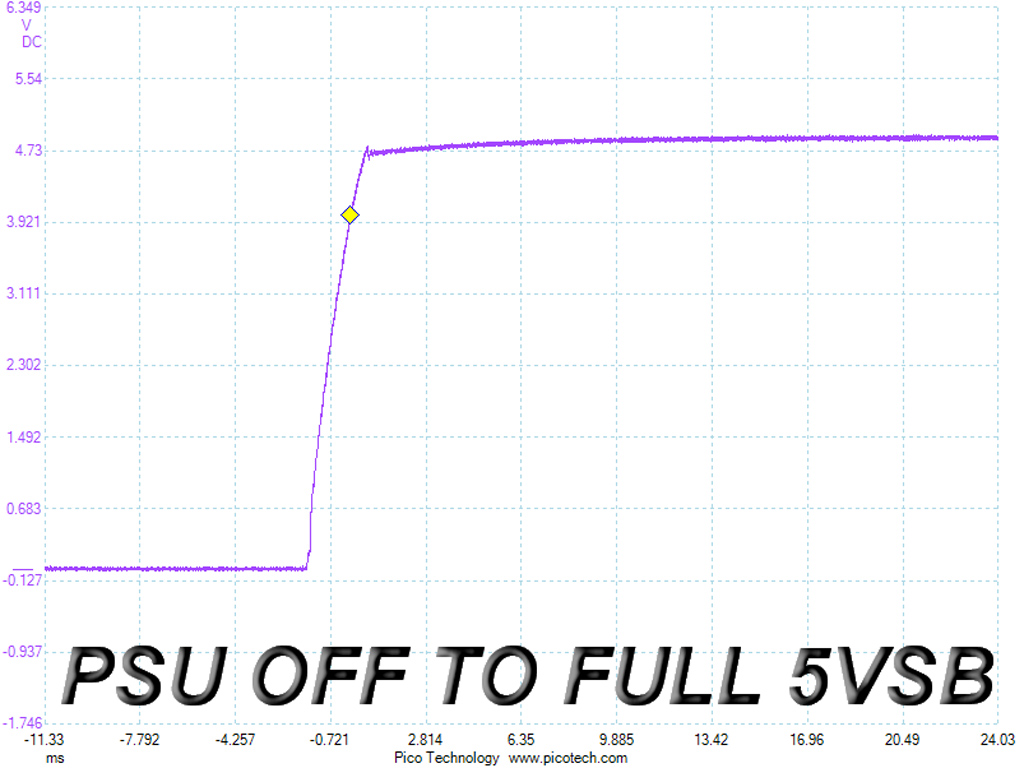
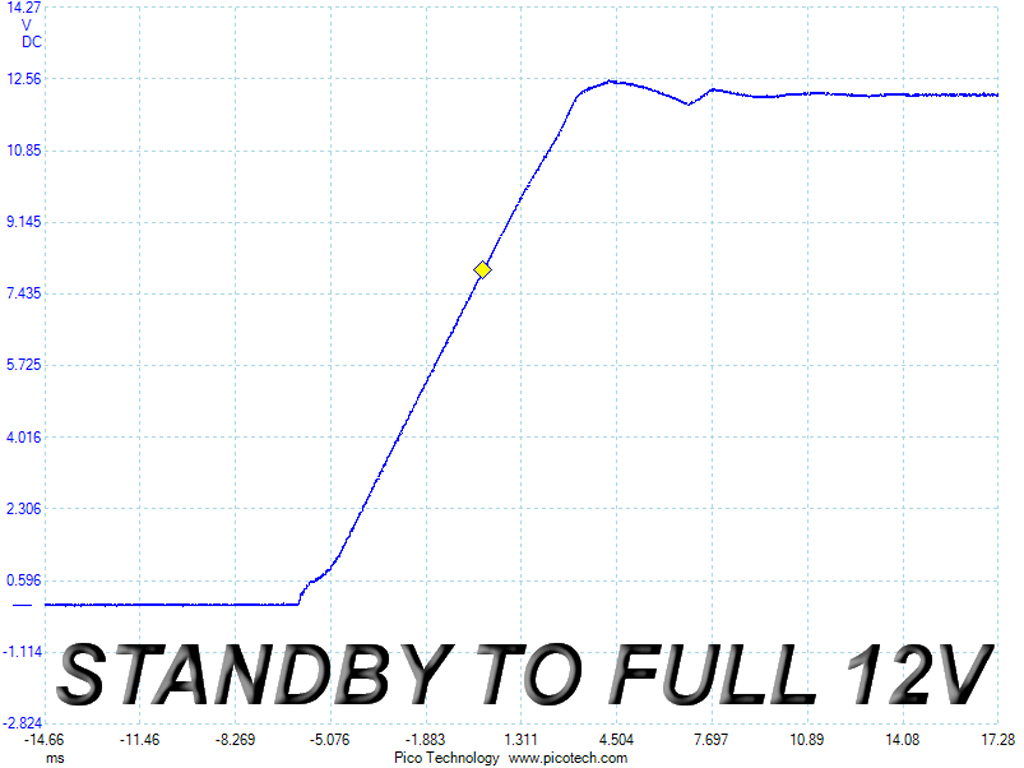
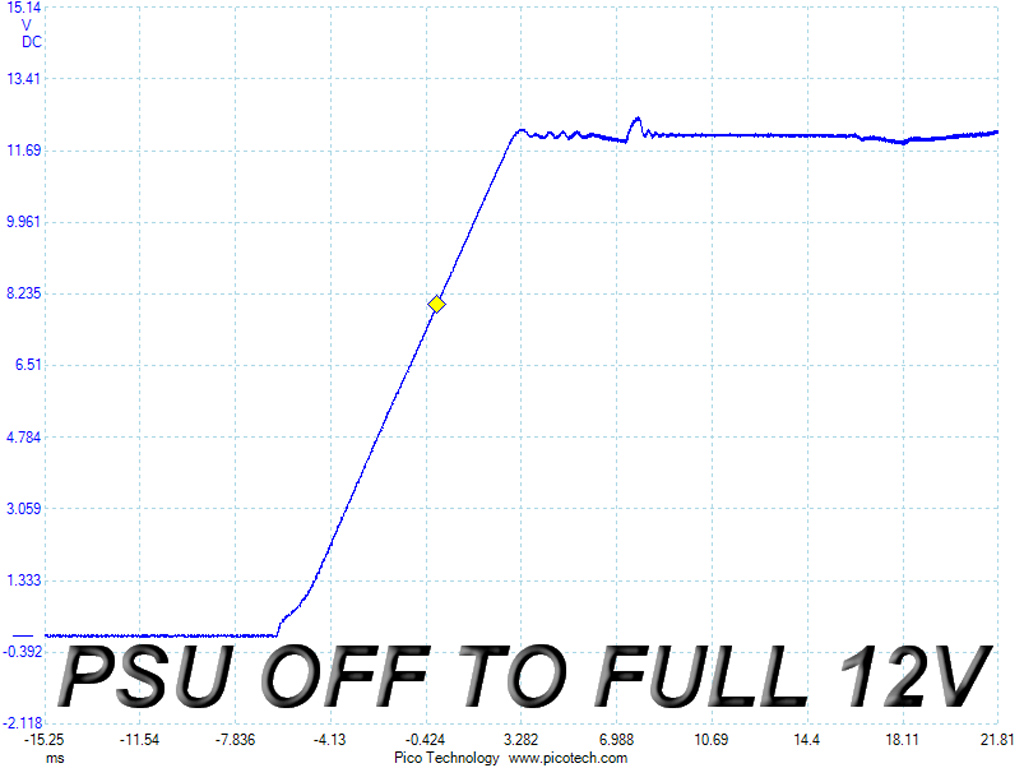
There's a barely-noticeable spike at 5VSB and a small wave during the second test, both of which are nothing to worry about. Only during the last test do we measure a larger spike that exceeds 12.5V. It's still well under our upper limit, though.
Current page: Transient Response Tests
Prev Page Cross-Load Tests And Infrared Images Next Page Ripple Measurements
Aris Mpitziopoulos is a contributing editor at Tom's Hardware, covering PSUs.
-
vladm007 You can see the level of faith Raidmax has on the quality by having a 2 years warranty.Reply -
g-unit1111 Reply17870964 said:You can see the level of faith Raidmax has on the quality by having a 2 years warranty.
Yeah that's kind of a deal breaker. :lol: -
turkey3_scratch Another unit cheating on the PWR_OK tests. I'm sick of this crap. Also, those caps on the modular board don't look like Chemi-Con polymers, they look like electrolytics (not that it matters, I'm just questioning if you made a wording error). I also don't like the lack of a thermistor at all. That's some really high inrush current. They could have dished out some cash for one and a relay. I also think the warranty needs increased, but realistically it should last a lot longer than 2 years.Reply -
powernod Reply17871369 said:Another unit cheating on the PWR_OK tests. I'm sick of this crap. Also, those caps on the modular board don't look like Chemi-Con polymers, they look like electrolytics (not that it matters, I'm just questioning if you made a wording error). I also don't like the lack of a thermistor at all. That's some really high inrush current. They could have dished out some cash for one and a relay. I also think the warranty needs increased, but realistically it should last a lot longer than 2 years.
Exactly my thoughts! ;)
Failure at Power_OK signal & huge amount of inrush current = Deal-breaker for me :pfff: -
Aris_Mp if they provide a 5-year warranty and work on the price it has potential. The inrush current is an easy fix with a relay-bypass relay, however the lower than the required hold-up time isn't so easy addressable. A larger bulk cap will need more Amps to charge and more Amps lead to increase power losses, so efficiency will take a hit.Reply -
basroil Very close to be very good, and then it fails at the holdup time... looks like there's still only two real PSU manufacturers (seasonic and superflower)Reply -
Sakkura Why would anyone wonder why Raidmax only has a 2-year warranty? With the junk they've released in the past, it's a miracle they provide any warranty at all.Reply -
g-unit1111 Reply17872208 said:if they provide a 5-year warranty and work on the price it has potential. The inrush current is an easy fix with a relay-bypass relay, however the lower than the required hold-up time isn't so easy addressable. A larger bulk cap will need more Amps to charge and more Amps lead to increase power losses, so efficiency will take a hit.
I think any warranty above 5 years is kind of redundant. In 7 or 10 years you won't have that PSU anyways since you'll be replacing it with something new to keep up with new tech. 5 years I would say is about the length of time a warranty should be. -
turkey3_scratch Reply17872463 said:Very close to be very good, and then it fails at the holdup time... looks like there's still only two real PSU manufacturers (seasonic and superflower)
Superflower cheats on holdup time on various units. Look at the Leadex Gold 550. The 650 G2 also is a problem most likely, and the 750 G2. -
firefoxx04 I've used their cheaper units 3 times. One failed, however, it's environment was a worst case scenario. Very hot Michigan summer with no ac, dusty room, and almost always running the system with 100% cpu and gpu load.Reply